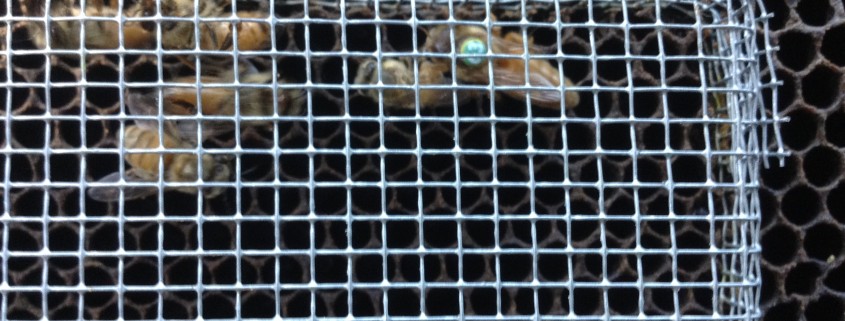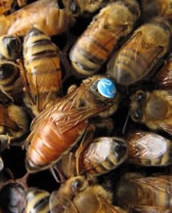Next Year’s Champions
During the height of the beekeeping season, while we are busy raising queens and shipping orders, another project takes place in the background. Our breeding experts are assessing an assortment of bee stock obtained from around the country for the best of the best – the most mite resistant, the most gentle, the most hardy of all. They then cross their best candidates with other desirable stock, typically pure VSH drones obtained from the USDA. If all goes well, the results are outstanding breeder queens for the upcoming season – next year’s champions.
Around the end of each season, we look forward to receiving a new group of these hand-selected breeders to add to our existing proven stock. This assures us a ready selection of quality queens from which to breed at the start of the next season.
We recently received our final set of this season’s breeder queens. Number 63, pictured above inside a push-in cage, arrived with high accolades. Her offspring is light and gentle, and contains both the Pol-Line and VSH traits. She is precious, and we are taking all precautions for her well-being!
To introduce her into a new colony we used a homemade push-in cage. This type of cage allows the queen to begin laying eggs in a safe and controlled area before the cage is removed and she is fully released into her new colony. By laying eggs before she is released, she becomes more desirable and better accepted by her new colony, greatly increasing the odds of her successful introduction.




